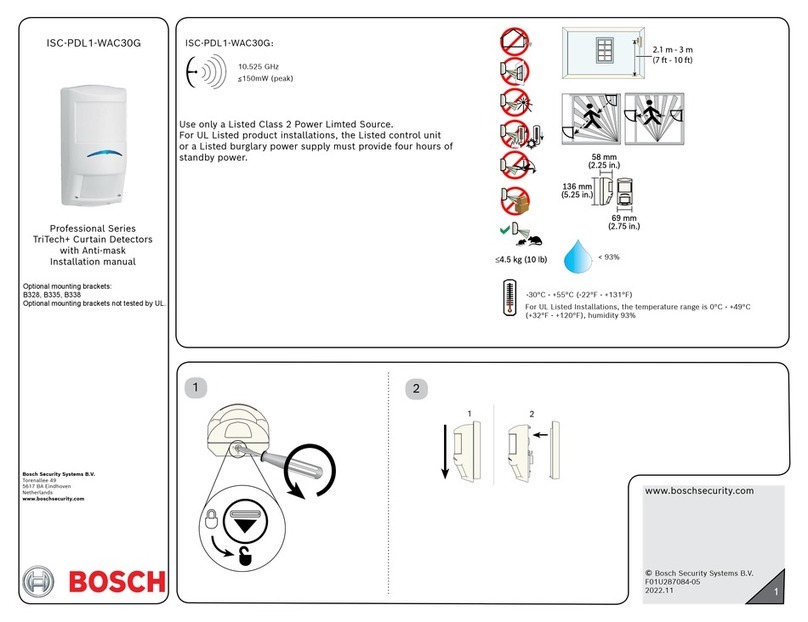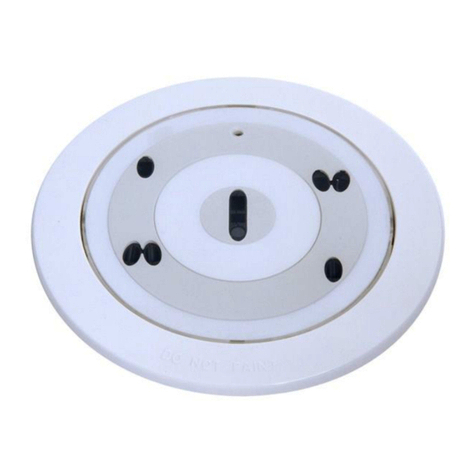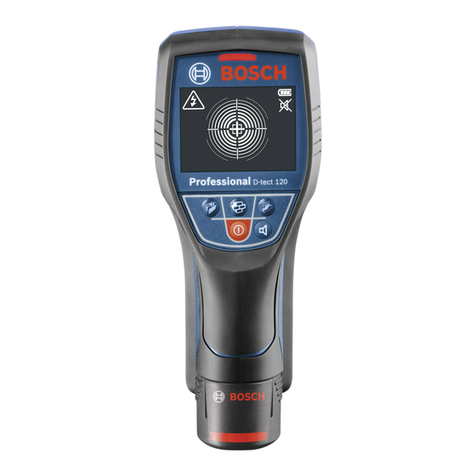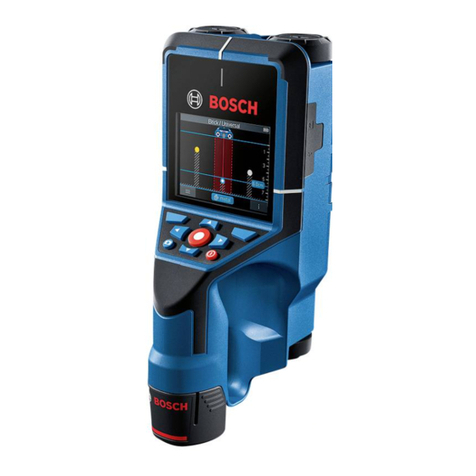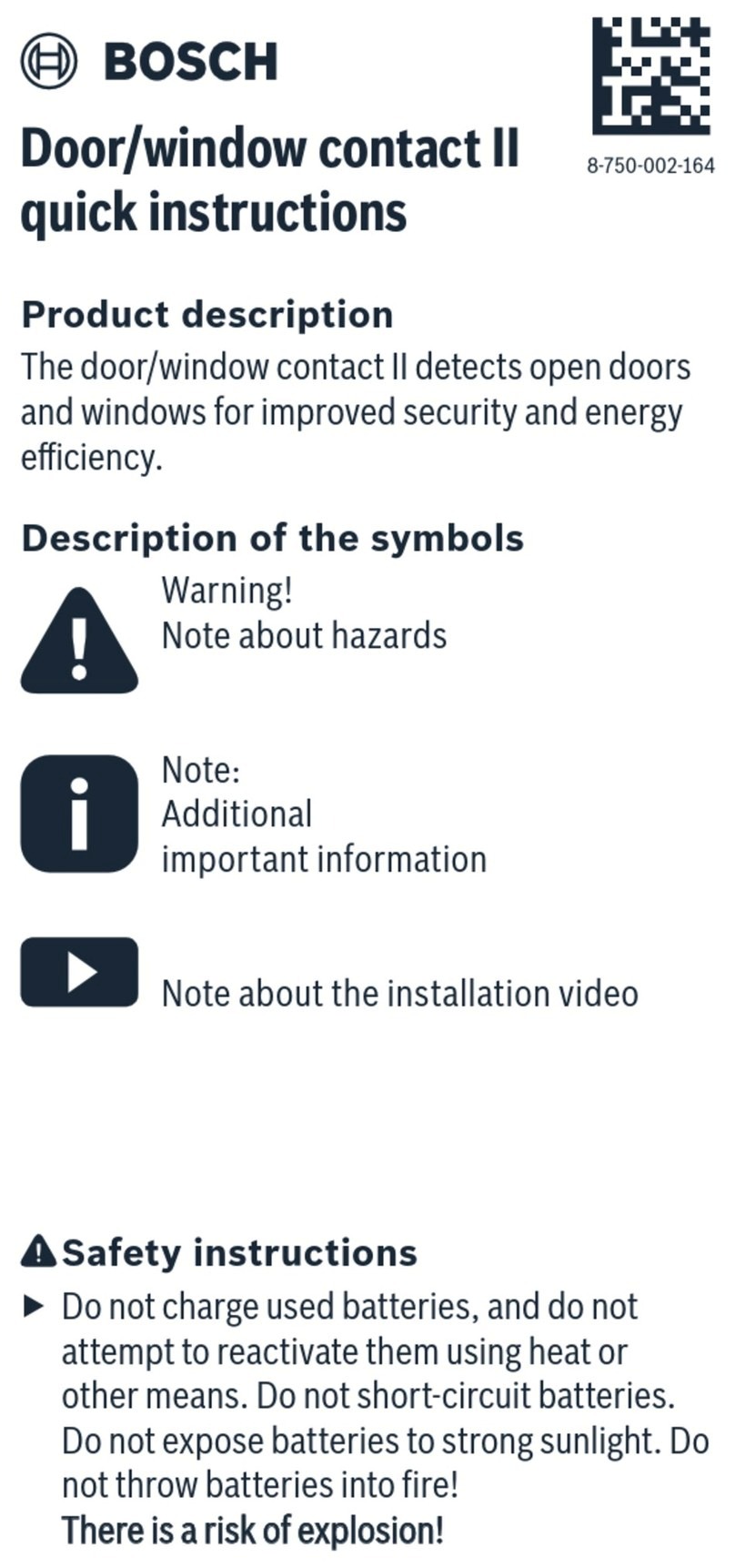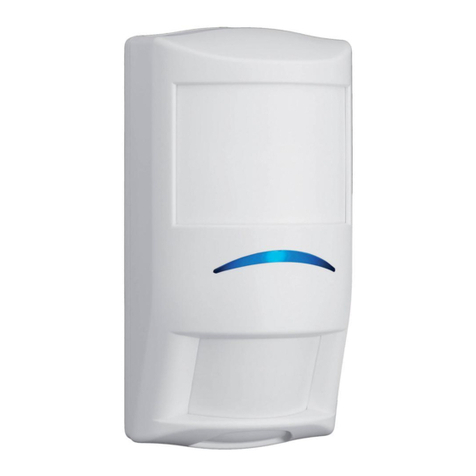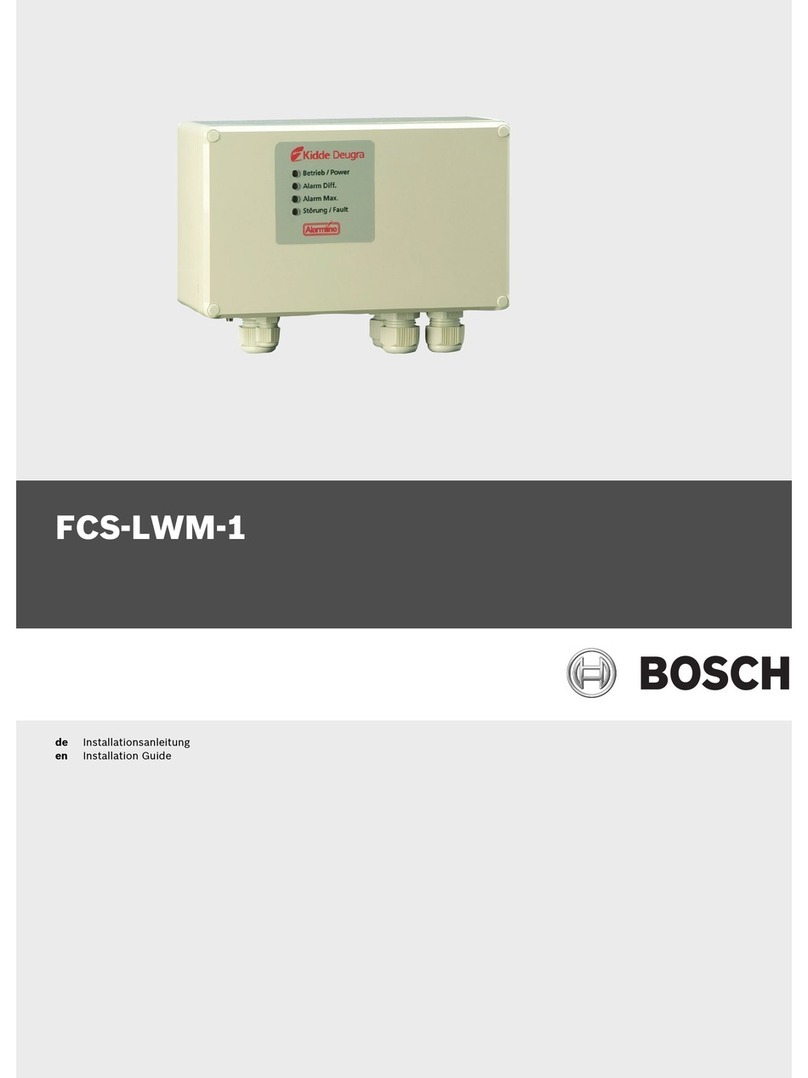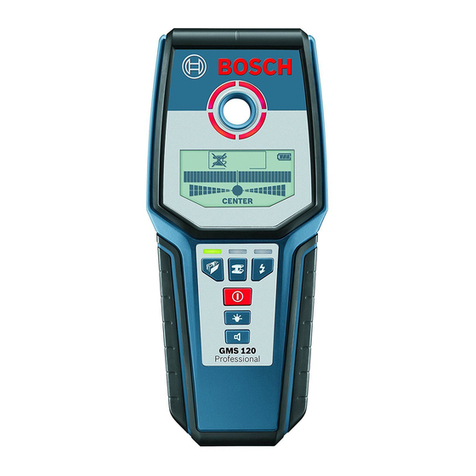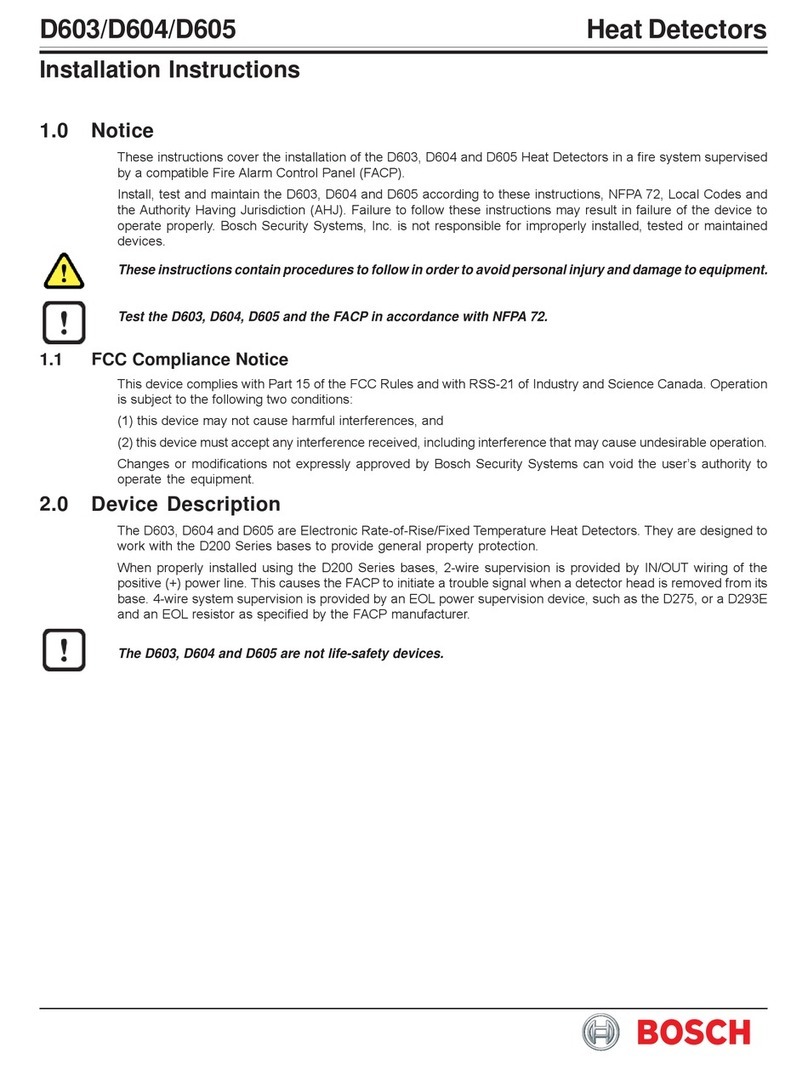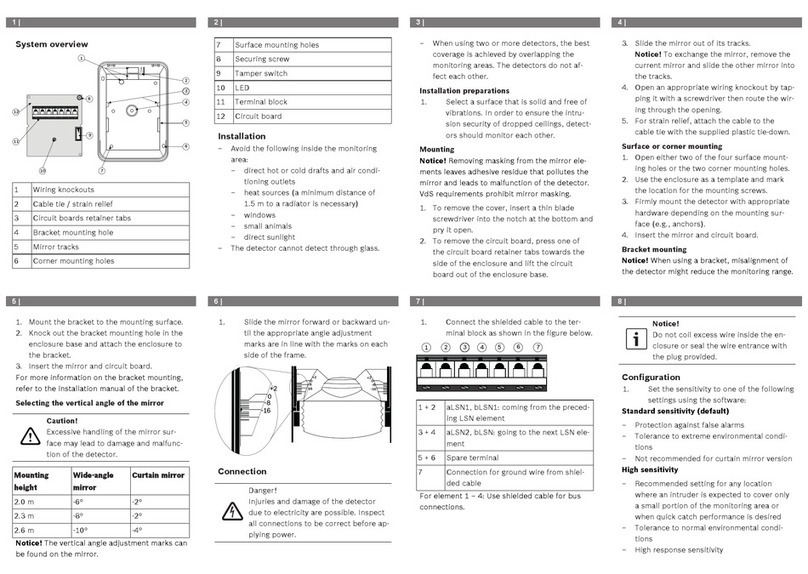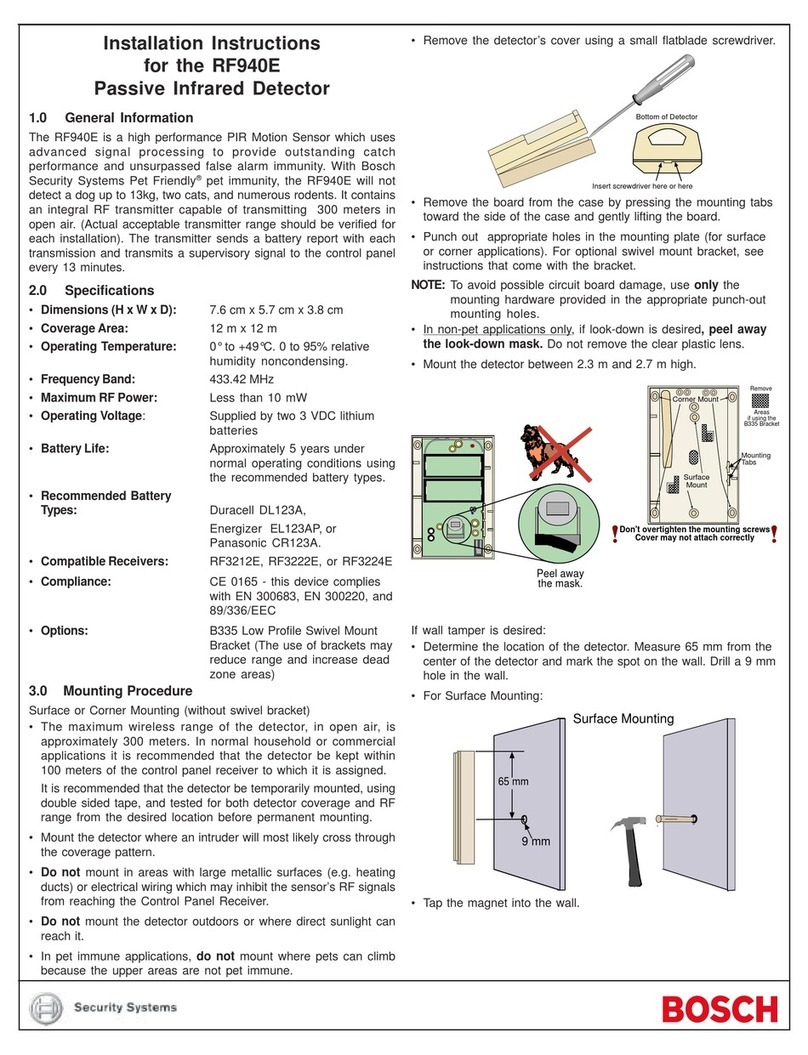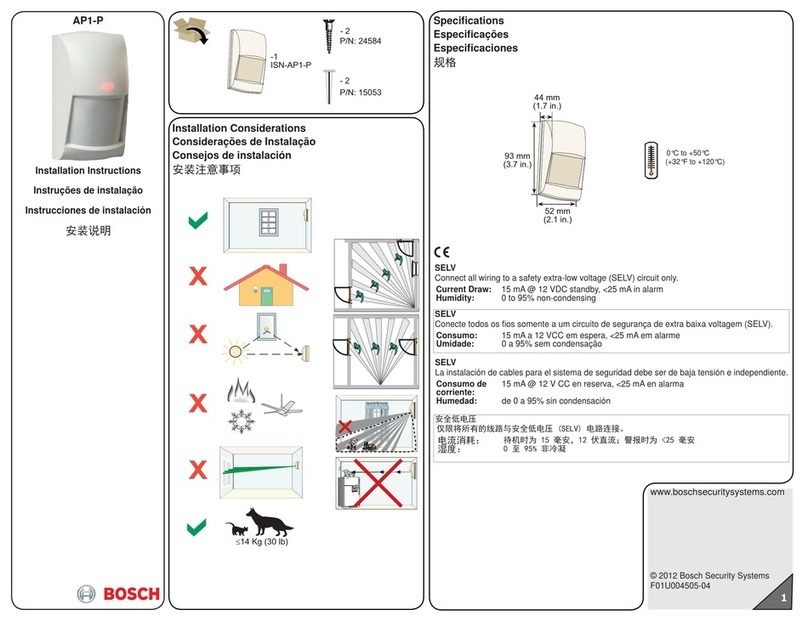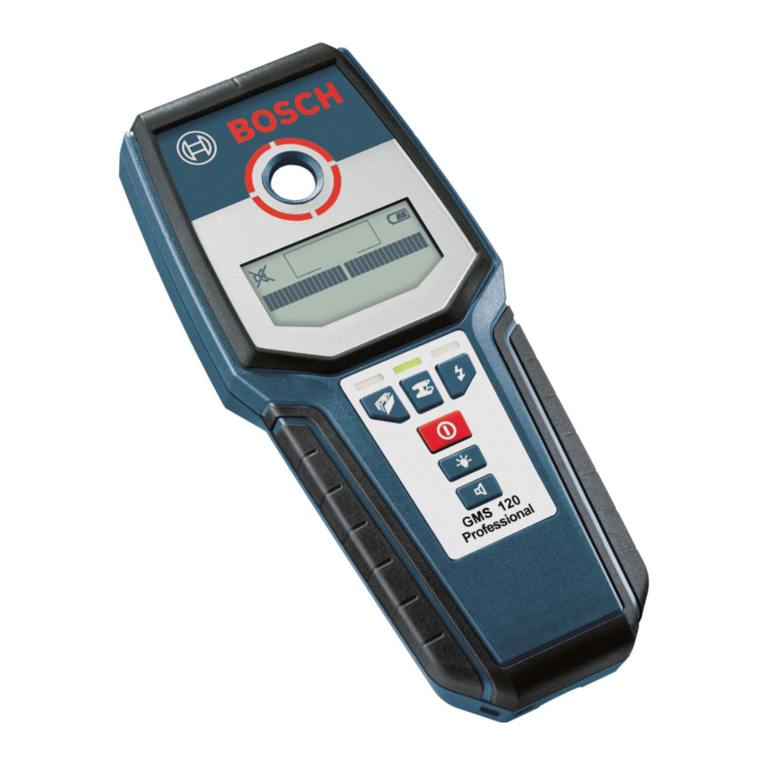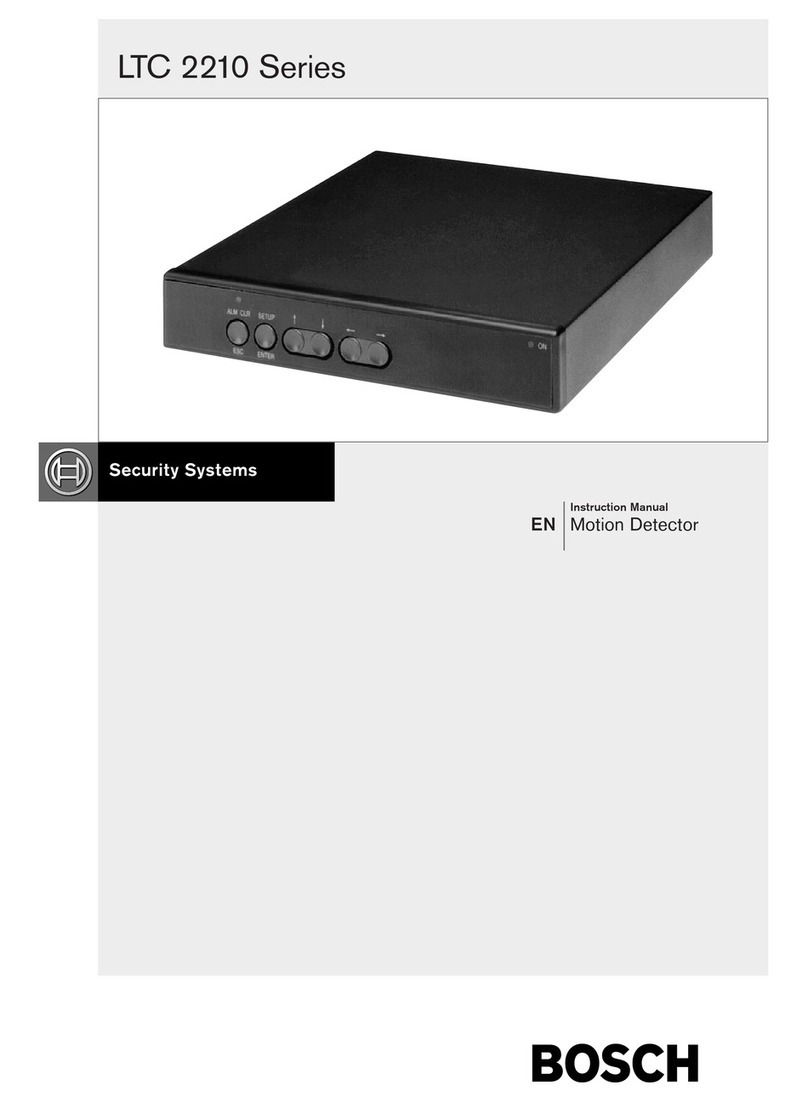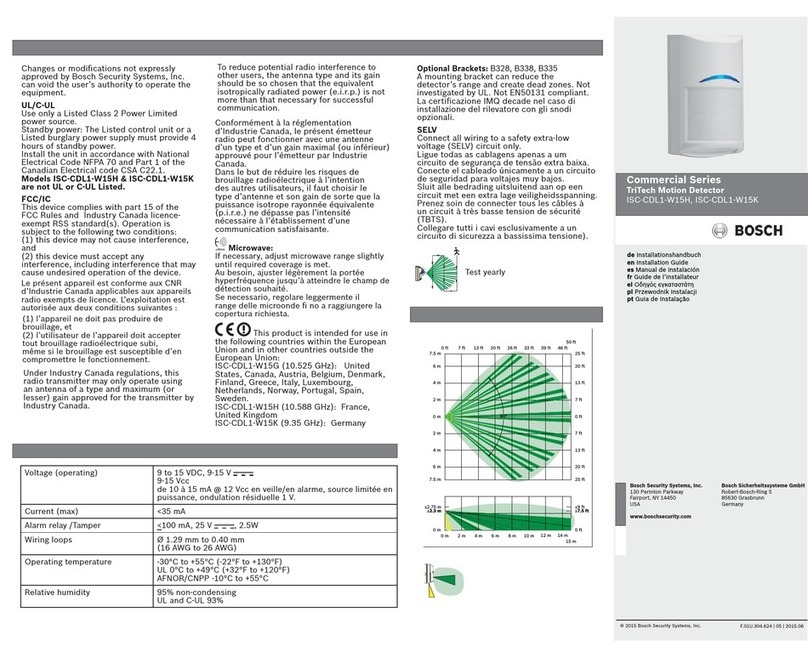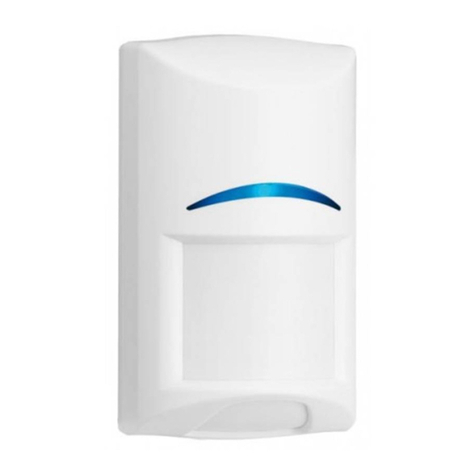
ZX835
ZX835 Installation Instructions
© 2003 Bosch Security Systems Page 3 35985G
Note: A mounting height of 6 1/2 ft. (2 m) and the proper vertical angle must be selected for
installations containing pets. See Section 12.0 Special Instructions, p. 4.
•Place the LED plug in the ON position.
•Wait at least two minutes, after applying power, to start walk tests.
Note: During the warm-up period, the tri-color LED will flash red until the unit has stabilized and
has seen no movement for two seconds (approx. 1 to 2 minutes). When the LED stops flashing,
the detector is ready to be tested. With no motion in the protection area, the LED should be OFF. If the LED is on, re-check
the protection area for disturbances affecting the microwave (yellow) or PIR (green) technologies.
8.1 Establishing PIR Pattern Coverage
1. Turn the Microwave range adjust to minimum and replace the cover.
2. Walk test across the pattern at its farthest edge, then several times closer to the detector. Start walking from outside of the
intended protection area, and observe the tri-color LED. The edge of the pattern is determined by the first green, PIR
activation of the LED (or the first red activation if the yellow microwave LED activates first).
3. Walktestfromtheoppositedirectiontodeterminebothboundaries.Thecenterofthepatternshouldbepointedtowardthe
center of the intended protection area.
4. Slowly bring your arm up and into the pattern to mark the lower boundary on PIR alarm. Perform this task at 10 to 20 ft.
(3.1 to 6.1 m) from the unit. Repeat from above for the upper boundary. The center of the pattern should not be tilted
upward.
5. If desired coverage can not be achieved, try angling the coverage pattern up or down to assure the pattern is not aimed too
high or low. For pet applications, do not adjust below recommended angle. The angle of the PIR pattern may be vertically
positioned between -10° and +2° by loosening the Vertical Adjust screw and sliding the circuit board up or down.
Moving the board up will angle the pattern downward. Tighten the screw snug when positioning is completed.
Note:The pattern may be moved ±10° horizontally by moving the lens window left/right.
8.2 Establishing Microwave Coverage
Note:It is important to wait one minute after removing/replacing the cover so the microwave portion of the detector can settle,
and to wait at least 10 seconds between the following walk testing procedures.
• The tri-color LED should be OFF before walk testing.
1. Walk test across the pattern at the intended coverage’s farthest end. Start walking from outside the intended protection
areaandobservethetri-colorLED.Theedgeofthemicrowavepatternisdeterminedbythefirstyellow,microwaveactivation
of the LED (or the first red activation if the green PIR LED activates first).
2. If adequate range can not be reached, increase the Microwave Range Adjust slightly. Continue walk testing (waiting one
minute after removing/replacing the cover) and adjusting the range until the farthest edge of desired coverage has been
accuratelyplaced.
Note: Do not adjust the microwave range higher than required. Doing so will enable the detector to catch movement outside of the
intended coverage pattern.
• Walk test the unit from all directions to determine all the detection pattern boundaries.
8.3 Establishing Detector Coverage
•The tri-color LED should be OFF before walk testing.
• Walk test the unit from all directions to determine the detection boundaries. A detector alarm is signaled by the first red
activation of the tri-color LED after an initial green or yellow activation.
9.0 Supervision Features
The supervision features function as follows:
•PIR/Microwave: The complete circuit operation of these subsystems is tested approximately every 6 hours. If the PIR or
microwave subsystem fails,a second test is performed after one hour. If the PIR or microwave subsystem fails the second test,
the tri-color LED will flash red 4 times per cycle and the unit should be replaced.
•Default: Thedetectorwilldefaultto PIR technologyprotectionifthemicrowavesubsystemfails.Whendefaulting to PIR,the
PIR signal processing will change from INT to STD sensitivity.

